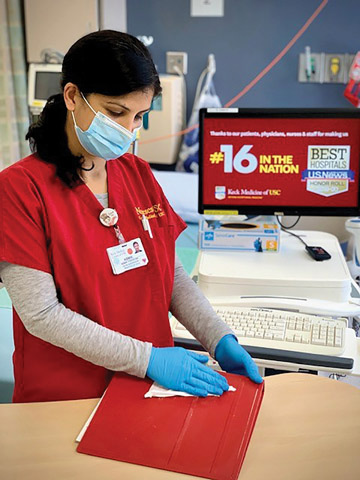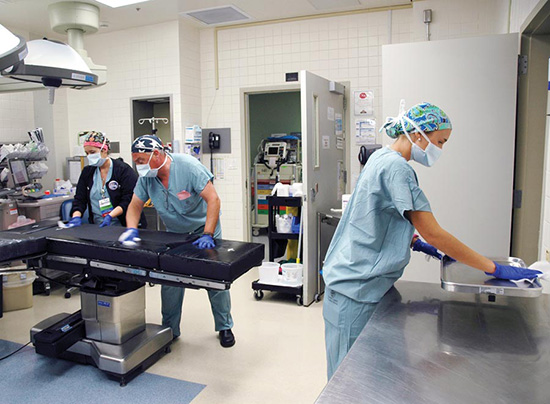A Team Approach for a Cleaner, Safer Environment Means Better Outcomes for Patients
Keeping patients and staff safe in the OR with effective surface disinfection protocols, efficient hand hygiene plans and environmental cleaning procedures yields positive results.
 Credit: Metrex
Credit: Metrex
James Chia, Senior Director of Research & Development at Metrex.
Patients are heading back to the OR for elective surgeries in the nation's hospital outpatient departments and ambulatory surgical centers, and OR leaders are looking at more ways to improve infection prevention and keep patients – and the staff – safe in the OR. We asked James Chia, Senior Director of Research & Development at Metrex, about the renewed focus on surface disinfection and how it can be accomplished effectively.
With Covid-19 still top of mind in all healthcare facilities, what would you want OR teams to keep in mind as they prepare their OR rooms for outpatient surgeries?
Due to the complex and diverse environmental elements (medical devices, facilities, people) in the OR rooms, a comprehensive cleaning procedure should be developed in a team approach. This should range from establishing efficient hand hygiene plans and environmental cleaning/disinfection procedures to building a multidisciplinary team covering expertise such as perioperative leader, infection preventionist, EVS leader, and many more roles. Specifically, for surface disinfection, it is suggested for the cleaning team to use cleaner/disinfectant that has a broad spectrum of activity against the major pathogens AND SARs-CoV2, since we are still in a pandemic and COVID is still here.
What is the overall importance of surface disinfection in the OR and other locations in the ASC and hospital outpatient departments?
Invasive procedures in OR and other locations in the ASCs offer pathways for infection-causing pathogens to enter the body, such as Staphylococcus aureus and/or MRSA, Pseudomonas aeruginosa, etc., and these pathogens can spread and stay infectious on surface for months. OR rooms are not dedicated to one patient but are used multiple times for many patients – thus effective surface disinfection targeting these pathogens could significantly reduce the risk getting infected by directly or indirectly contacting the contaminated surface.
What can OR leaders do to train their teams for the best results in infection prevention?
OR leaders should allow their staff the appropriate turnover time to thoroughly clean and disinfect the equipment and environment for the next patient. It would be ideal to make sure the trainings cover multi-disciplinary expertise such as perioperative leader, infection preventionist, EVS leader and many more roles.
What considerations are important when choosing a surface disinfectant product?
There are several attributes to watch when choosing a surface disinfectant in use. From a clinical perspective, an appropriate surface disinfectant product should cover a broad spectrum of efficacy kill claims against various bacteria, virus, fungi and drug-resistant microorganisms that transmit via a surface. The contact time should be considered when improving turnaround time and compliance are important. From a technical application perspective, the product should have great cleaning performance and decent compatibility with common materials used in medical device such as metal, plastic and ceramics.
How does CaviWipes help in an overall infection prevention program?
CaviWipes stands out among other surface disinfectant products due to its multi-surface material compatibility and fast and easy cleaning efficacy. These two qualities are considered extremely important to the success and effectiveness of surface disinfection and infection prevention in general.
What trends do you see coming up in the future for surface disinfection protocols?
As technology keeps evolving, more applications are developed towards simplifying the workflow in surface disinfection protocols, such as combining cleaning and disinfection into one-step process when no visible soil is present, shortening disinfection contact/dwell time, and broadening efficacy claim coverage for clinically relevant pathogens. Besides, future surface disinfection will require more sustainable and safer chemistries and better user experience. With that being said, cleaning should not be compromised and should still be the focus in surface disinfection, and it will still be a must-have element in the future protocols.
Note: For more information, please visit www.metrex.com.
 CREDIT: Karen Tjelmeland
CREDIT: Karen Tjelmeland.svg?sfvrsn=be606e78_3)



.svg?sfvrsn=56b2f850_5)